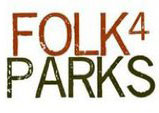In this post we will be going through what should be on your hiking gear checklist. Have you got everything you need to go out hiking? Are you going out summer hiking or winter hiking? What if something goes wrong, have you got the right stuff in your rucksack if the worst did happen?
Plan your Route
The first thing you need to do is plan your route in advance. Sit down at home with your map and work out where you will be going, how far it is, how high will you be going and how long do you think it will take. Check the weather forecast the night before and the morning of the day you are going. The MET office has a forecast page for the National Parks. Fully charge your phone, GPS device or anything else that needs it.
Clothes to Wear
- Boots – Should be light weight, waterproof and breathable. Read the full guide here.
- Base Layer – Short or long sleeved, wicking capabilities and light weight
- Mid Layer – Warm fleece
- Jacket – Light weight, water proof, wind proof.
- Leg Wear – Warm, quick dry, light weight. (not jeans)
- Socks – Comfy, warm hiking socks (only 1 pair worn, 2 can cause blisters)
Clothes to Carry
- Waterproof Coat – Light weight, packs into small pouch.
- Waterproof Pants – Light weight, packs away small
- Gaiters – Waterproof, easy on and off
- Hat – Sun Hat (summer), warm hat (summer and winter)
- Gloves – Warm and dry
- Socks – At least one spare pair (nothing worse than cold, wet feet.)
- Sun Glasses – even in winter, if there is snow on the ground, there will be a lot of glare off the snow. (snow blindness)
- Warm Layer – another light weight fleece or pull over than can be carried easily
List of Equpments
- Rucksack – With air frame. Large enough to carry all the gear. (don’t try and carry more than about 30% of your body weight)
- Walking Poles – At least one, maybe 2 depending on how hard the hike is.
- Crampons – is there going to be snow and ice at the tops of the mountains (optional on season)
- Small Sit Mat – You will more than likely stop for lunch or a drink, will keep you off the wet ground
- Map and Compass – I always take 2 compasses, just in case. Here are the best. 1:25000 OS Map
- Map Case – Don’t want a wet map (or weather proof map)
- GPS Device – Fully charged and downloaded with the map you are using
- Food – High carb, high protein foods
- Drinks – Energy drinks are ideal, also water and a flask if you want a brew
- First Aid Kit – with plasters, dressings, triangular bandage and antiseptic wipes
- Hydration Pack – Useful for carrying and drinking water while walking.
- Mobile Phone – And spare battery if you have one, or means of charging phone.
- Camera – You don’t want to miss anything
- Survival Kit – full of useful things like fire starters, para-cord
- Survival Blanket – Foil blanket to wrap up in
- Survival Bag – Large, usually plastic bag that you can get into.
- Knife or Multi Tool – You might need to make a shelter
- Toiletries – wipes, toilet paper, alcohol wipes or spray.
Are you Ready to Go?
Before you leave, tell someone where you are going and when you expect to be back. Give them the registration of your car and where you will be parking. Then if something goes wrong they can inform the emergency services (don’t forget to tell them when you get back.) Go out and enjoy the walk. Knowing that you are fully prepared and have all the correct equipment, will make the day more enjoyable. Please be safe. If the weather closes in, or you feel you can’t go on, please turn back the mountain will still be there tomorrow.

